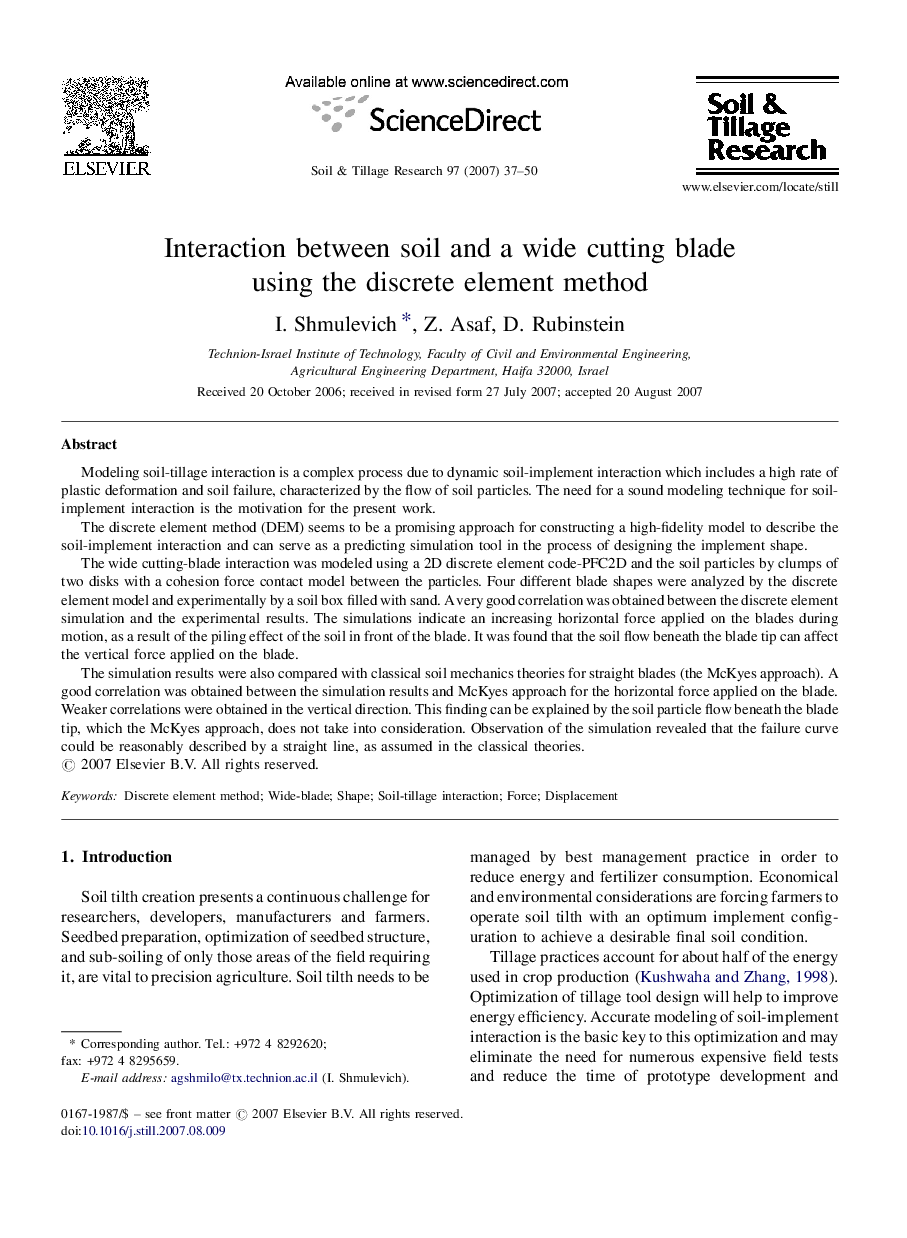| Article ID | Journal | Published Year | Pages | File Type |
|---|---|---|---|---|
| 306567 | Soil and Tillage Research | 2007 | 14 Pages |
Modeling soil-tillage interaction is a complex process due to dynamic soil-implement interaction which includes a high rate of plastic deformation and soil failure, characterized by the flow of soil particles. The need for a sound modeling technique for soil-implement interaction is the motivation for the present work.The discrete element method (DEM) seems to be a promising approach for constructing a high-fidelity model to describe the soil-implement interaction and can serve as a predicting simulation tool in the process of designing the implement shape.The wide cutting-blade interaction was modeled using a 2D discrete element code-PFC2D and the soil particles by clumps of two disks with a cohesion force contact model between the particles. Four different blade shapes were analyzed by the discrete element model and experimentally by a soil box filled with sand. A very good correlation was obtained between the discrete element simulation and the experimental results. The simulations indicate an increasing horizontal force applied on the blades during motion, as a result of the piling effect of the soil in front of the blade. It was found that the soil flow beneath the blade tip can affect the vertical force applied on the blade.The simulation results were also compared with classical soil mechanics theories for straight blades (the McKyes approach). A good correlation was obtained between the simulation results and McKyes approach for the horizontal force applied on the blade. Weaker correlations were obtained in the vertical direction. This finding can be explained by the soil particle flow beneath the blade tip, which the McKyes approach, does not take into consideration. Observation of the simulation revealed that the failure curve could be reasonably described by a straight line, as assumed in the classical theories.
